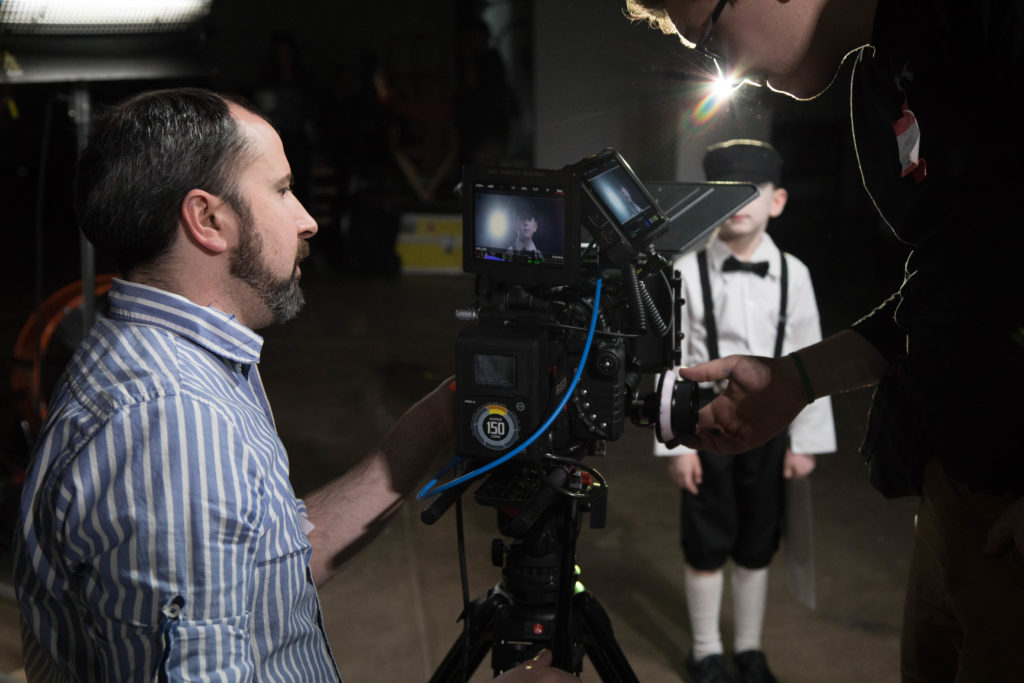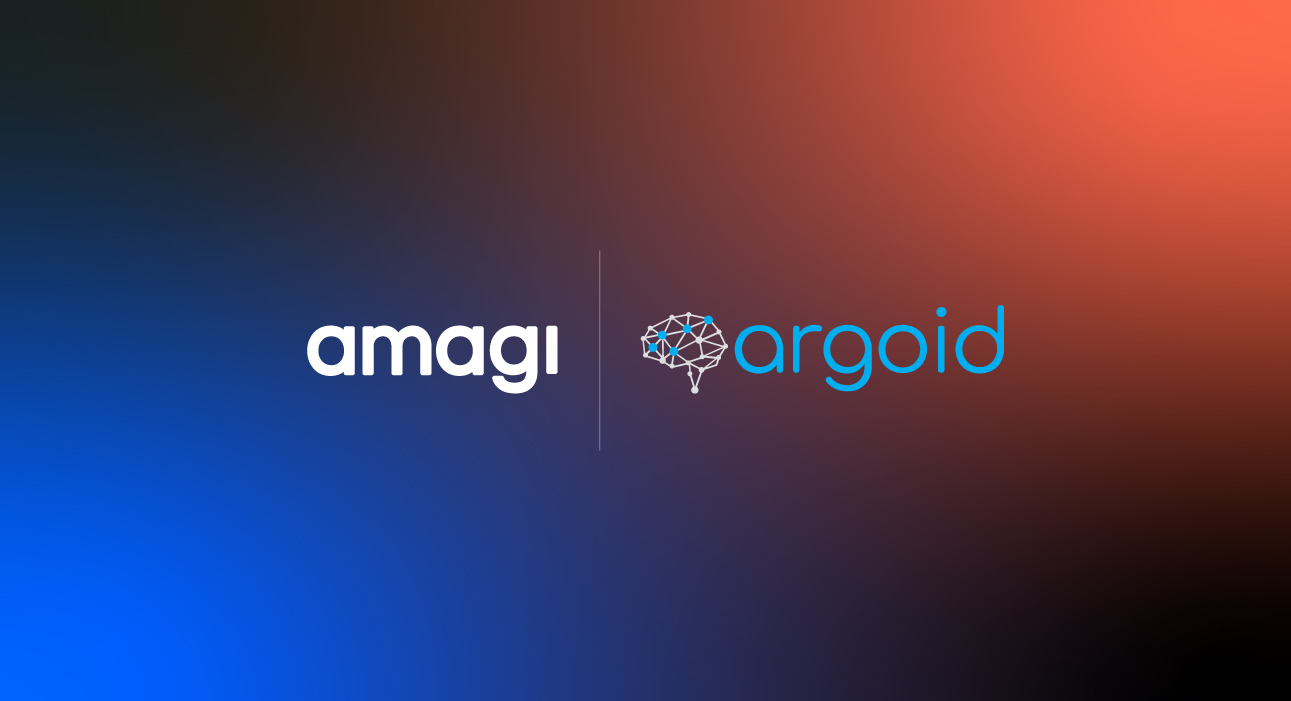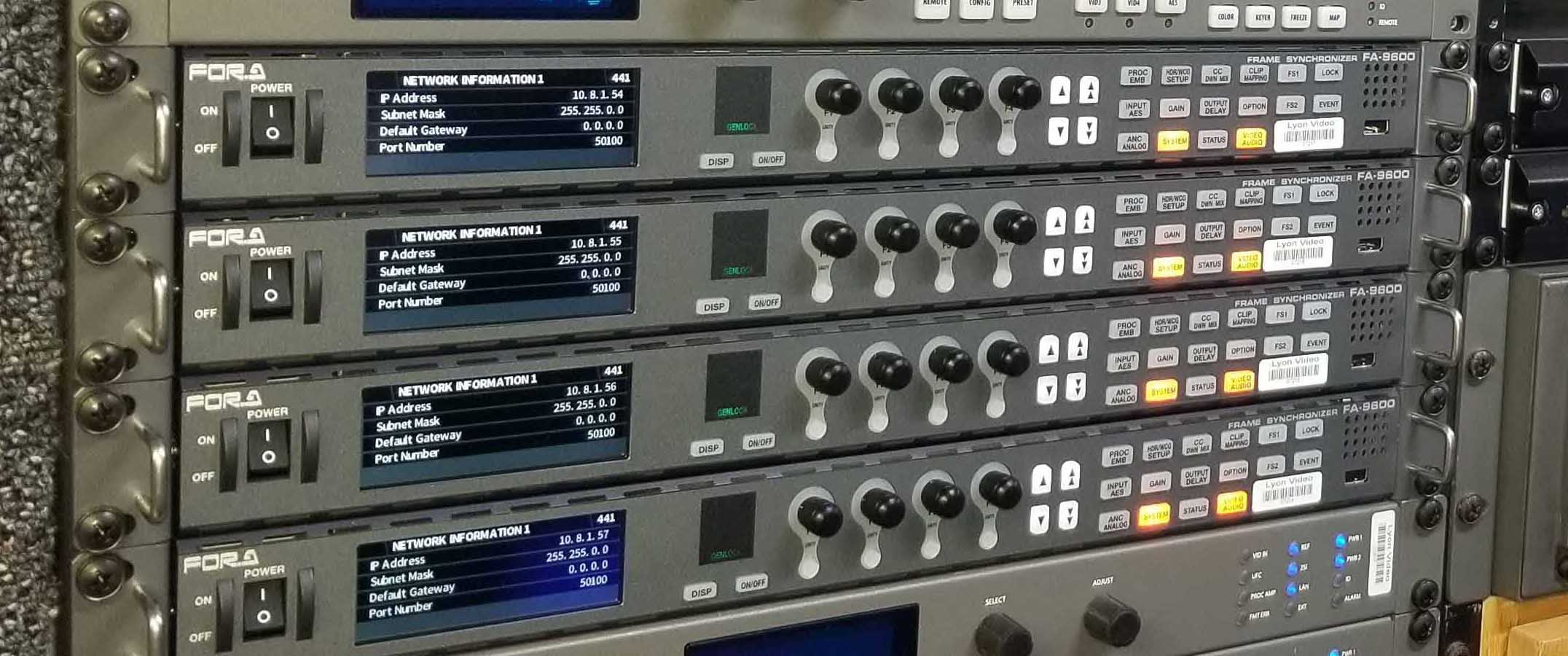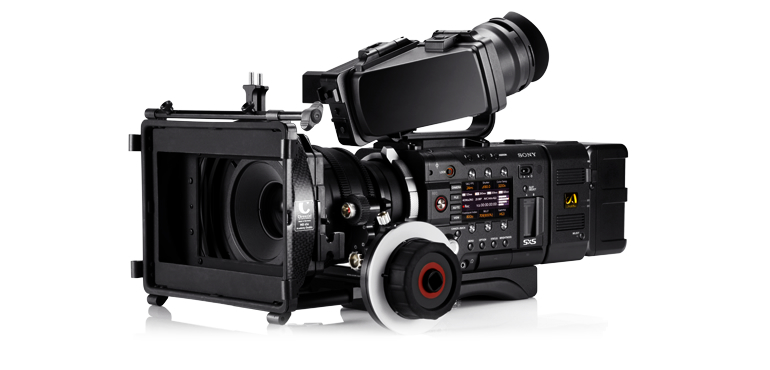
Written by John Klein
Cinematographer John Klein documents the production of the short allegorical film LVRS on the Epic Dragon, featuring everything from projections to gore FX.
LVRS is a short film that defies easy comprehension or summary. In dealing with the subject of abusive relationships (the title “LOVERS” with the missing vowels highlights how abusers rip away pieces of their victims), writer-director-actress Emily Bennett sought to integrate magical realism and horror elements into the narrative of a woman in a relationship with a man who has a mirror for a face, in which she sees the most glamorous version of herself in him despite the bodily harm inflicted on her with each supposed transgression.
When Emily brought me on as the cinematographer for the film, the script was still in the very early stages, but her final iteration settled on a Dogville-esque concept: the entire film would take place in a bare, white, four-walled gallery space, and when the “locations” would change, projections on the walls would sync up with lighting changes to transform the minimalist space. There’s also a boy with a red phone, both in and out of the projections. All this, coupled with difficulties presented by the mirror mask, gore FX, and the rules of this strange, surreal world, presented a whole heap of challenges both visually and technically, especially given our limited budget and schedule.
Naturally, this got me crazy excited. What cinematographer doesn’t love a good challenge?
From the get-go, Emily built a massive Pinterest lookbook featuring everything from It Follows to Shutter Island, and alongside production designer Ladie K Mraz crafted a near-monochrome color scheme that meant only wisps of warmth or coolness could make their way into the frame, save for specific bright-red props meant to symbolize elements destroyed by the woman’s abuser. Emily is based in NYC and I in Chicago, so we collaborated via Skype and Google Hangout, using her storyboards as a guide to building a more detailed shot list, and from there I drew up crude overheads to figure out the geometry of the space and the projections.
Due to the number of visual effects shots in the film and the need for digital zooms and reframings in post, we settled on the Red Epic Dragon for our shoot, filming in either 5K or 6K depending on lens options and how far we anticipated punching in on certain shots. Camera Ambassador’s Epic Challenge proved a lucky break for us, as we were able to secure a free camera body rental for the duration of the shoot, and other owner-operators (including my longtime gaffer Ben Kurstin and fellow cinematographers Marc Menet and William Donaruma) supplied us with other lighting and camera needs. Big Shoulders in Chicago rented two 10K Sanyo PLC XF projectors to us as well.
The projections themselves presented a wide range of issues early on. We needed to film various plates first, about a month or so before principal photography, but weren’t entirely sure how we would handle flicker issues between a 23.98p camera and the 29.97p projections. Would we film the projection plates themselves at different frame rates to compensate, or export normally and allow the flicker and strange digital artifacting to exist as part of the narrative? We chose the latter, mostly because the motion blur and weird delays actually looked cool and artificial. We also dealt with color-balancing the projectors to match one another, as one was an older model with different controls; our projectionist Scott Feigen certainly had his hands full on our prep day!
We shot the plates in 4K on a Panasonic GH5 running out to an Atomos Shogun, and editor Ward Crockett spliced a bunch of creepy goodness together for each sequence (the stars of the show included a restaurant scene with jump-cut-induced laughter and a church sequence featuring young Jack Thomas Downey covering his eyes in fear) that were then color graded to remove any unwanted colors such as green or yellow. We added film grain and increasing amounts of degradation to the projections in post, until the final scenes showed film actually burning in the projections on the wall.
When we got into production, the logistical complexity of the shoot quickly reared its head. Figuring out placement of the projectors and how to line up multiple video streams in the relatively small gallery space, so the projections could hit the wall but not our actors, proved an early challenge. We wound up setting the projectors exclusively on two walls, and so whenever we needed to face the projections, we would move set pieces and camera angles (regardless of screen direction) to face those walls. Determining where and how to place lights for maximum mood and contrast meant most setups utilized only two or three lights with minimal fill, and sometimes even just one overhead fixture, such as a Nila Varsa drilling into a white tablecloth for bounce or a D12 Hilio with CTO dimmed up in unison with a sunrise projection on the wall.
One of the trickiest elements was the placement of the “mirror mask” on actor Cole Simon’s face. There were three different versions of the mask: one an actual mirror, one green screen version for VFX additions, and one with glass so he could actually see through it for more complex moves where the mirror face wasn’t visible. Cole’s performance called for an aggressive yet controlled physicality, and visually the mirror had to hit certain positions for the camera. He would hold the mirror in his mouth via a cigar-sized stem coming out of the back, so we would constantly tell him to “cigar right” or cigar up” when we needed the reflection to avoid camera or lighting gear or when we wanted to see Emily’s face in the reflection. The man was a true pro about it and found ways to hit ultra-precise marks (sometimes blindly so!), and we even got some happy accidents on several takes.
And for us, it always came back to how we could best convey the mood of each scene, the romance tinged with the horror. I kept playing with different levels of soft filtration on the already soft Xeen Primes, eventually settling on a +3 Glimmer Glass to bloom the highlights in a way that would make Ingrid Bergman blush. Producer Keaton Wooden suggested that Emily and I utilize slow, subtle dolly moves (the Dana Dolly was in constant use) that would ramp up tension while allowing us to film larger chunks of the scenes in fewer shots, making each scene a kind of slowly degrading montage and playing off bits of classic Hollywood trickery and shadowplay with the projections.
Even while the film was in post-production, I’m already immensely proud of what we accomplished. And as a cinematographer, this is the kind of film I rarely get the chance to do, with so many moving parts and strange quirks; for many of us, this was our first time utilizing projection in this way, and it was a hell of a thing. With a small but crazy-talented crew, a fast-paced schedule that called for dozens of setups per day, and a concept that broke our brains at times, we hopefully created a work of art that will speak to audiences on a truly visceral level. Keep an eye out for us on the festival circuit soon!
Follow the film on Facebook at www.facebook.com/lvrsfilm.
Behind-the-scenes photos by Nick Jamison.
About the Author: John Klein (www.windycitycamera.com) is a freelance cinematographer and director, and currently teaches film in Chicago. He is the producer of Glass City Films, a production company responsible for several award-winning films including Chrysalis and Separation Anxiety.
About Emily Bennett
Emily Bennett is director, writer and SAG actor based out of NYC. She’s co-starred on the NBC shows The Blacklist, Chicago PD, Chicago Justice, and Chicago Fire. Her most recent feature screenplay She Came Back placed semi-finalist at Shriekfest 2017. She just completed principal photography on her fourth short film LVRS, a magical realism horror piece about love and domestic abuse. Training: The Royal Academy of Dramatic Art (RADA) in London.
IMDB: http://www.imdb.com/name/nm4077057/?ref_=nv_sr_1
Website: www.emilyreneebennett.com




